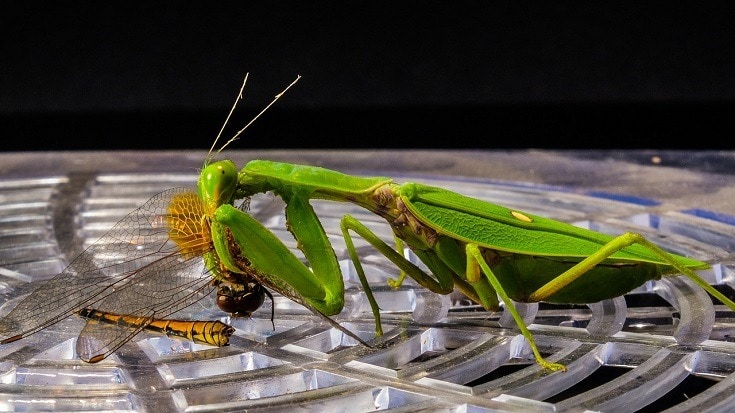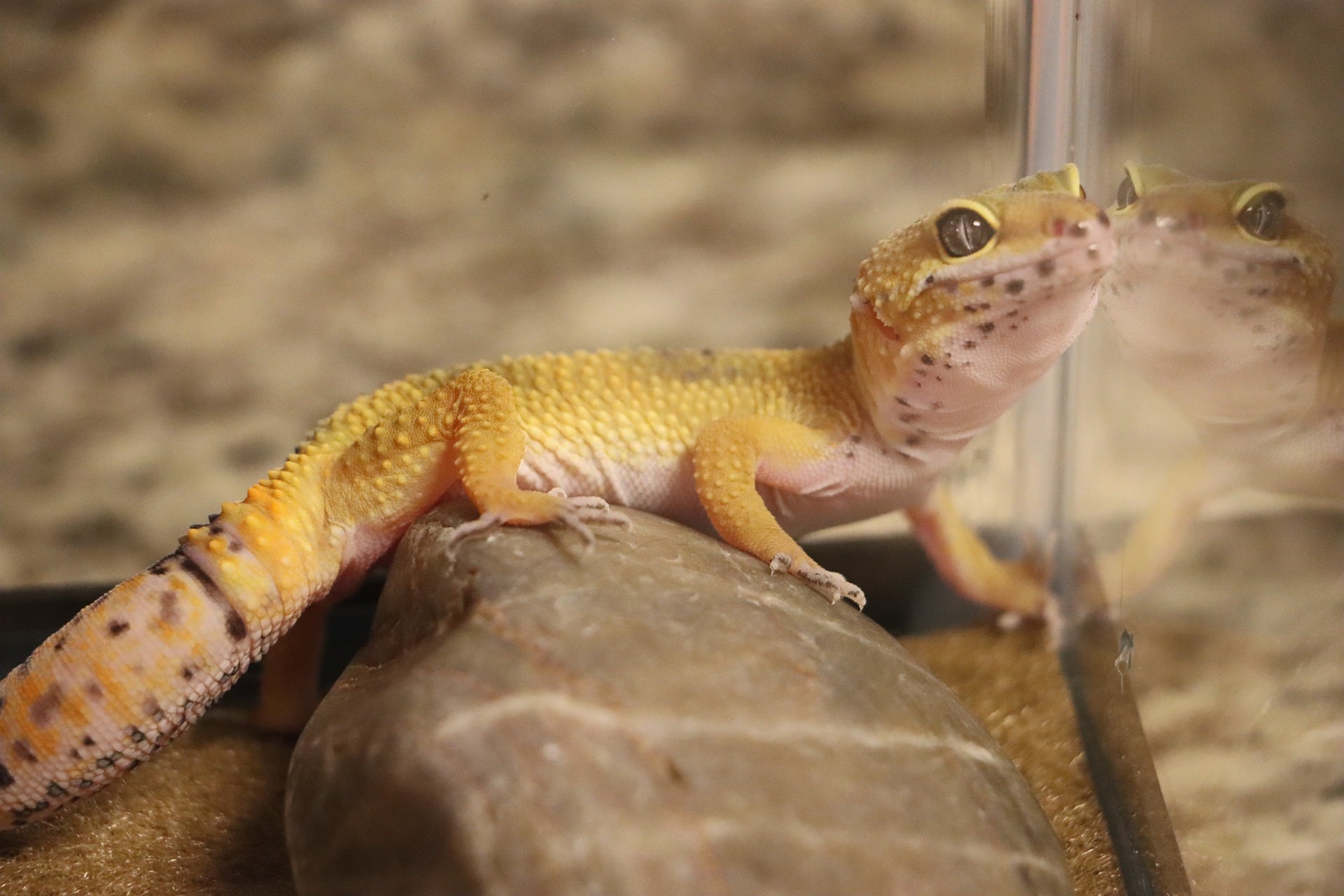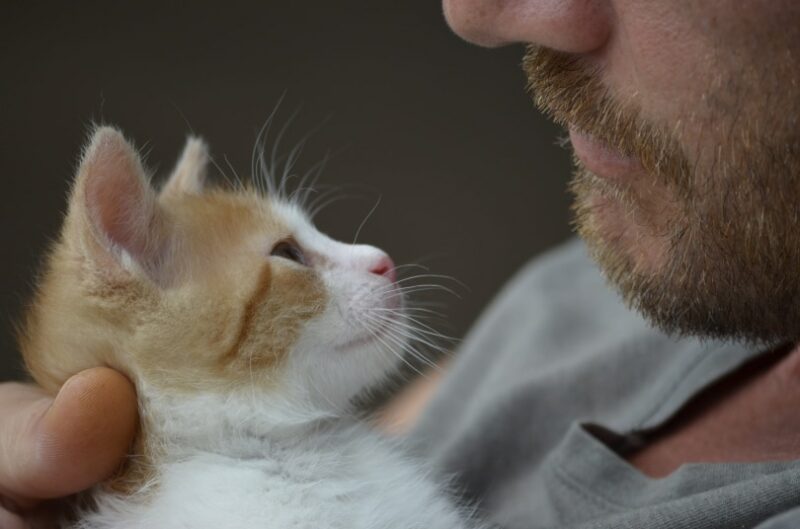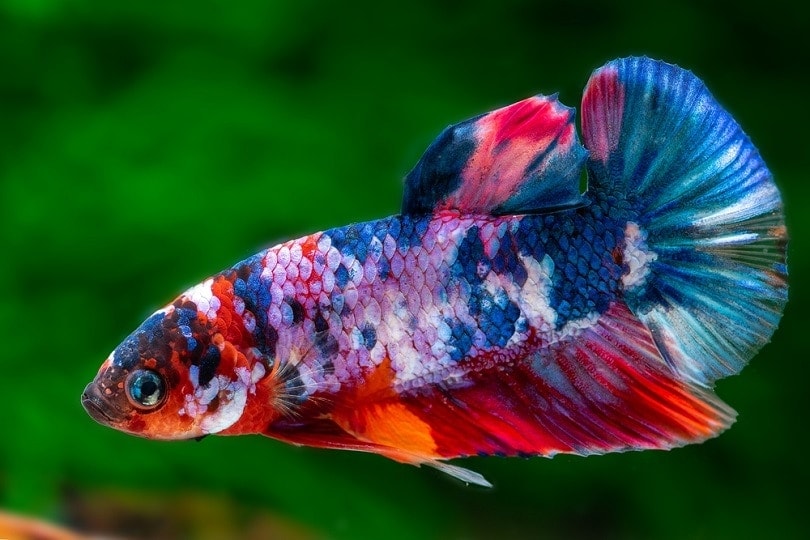
The fascinating Praying Mantis, or the Mantis religiosa, is a large invertebrate (up to 6 inches long) and is commonly found in Asia. However, many species (as much as 2,000 species) are located around the world, including North America.
The Praying Mantis’ average lifespan is 1 year or less in the wild, but they are known to live up to 2 years when kept as pets.
The Praying Mantis was named after its remarkably large front legs, which are held together and bent in a prayer-like angle. They are carnivores that stalk and hunt insects using their front legs with lightning speed to catch and pin their prey down.
How the Praying Mantis Hunts
The Praying Mantis uses camouflage as a means to hide and pounce when its unsuspecting prey enters its space. The Praying Mantis varies in colors from brown to green, allowing the mantis to blend in with plant leaves and bark. When the mantis molts, the color may change slightly depending on the surroundings (e.g., a green mantis will take on a more subtle brownish hue a few days after molting if it’s in a primarily brown-colored environment).
This camouflage helps to hide and protect the Praying Mantis as well as allow it to successfully hunt. The eating habits are part of what makes the mantis so fascinating so let’s look more in-depth into the diet of the Praying Mantis.

Praying Mantis Diet in the Wild
The Praying Mantis usually dines on mosquitoes, beetles, spiders, dragonflies, bees, grasshoppers, moths, crickets, flies, and a variety of other insects in the wild. The larger the mantis, the larger the prey they will go after – the larger Praying Mantis are known to eat frogs, small birds, rodents, and lizards.
The Praying Mantis is famous for the female’s mating behavior, who eats the male during or after mating. So, the mantis eats mostly insects as part of its diet and also resorts to cannibalism under certain circumstances.
Praying Mantis Diet as Pets
As a pet, the Praying Mantis will require a diet comparable to what it eats in the wild in order to ensure it is receiving the required nutrition. Feeding your mantid should prove a cheap and easy chore as insects are numerous and should be easily found and caught. We caution against getting insects from the wild though, as they could have parasites that could harm your mantis. Another better option is to keep live insects on hand for your mantid. This entails providing a space with the proper humidity and temperature as well as appropriate food and water.
You only need to feed your mantid every 1 to 4 days, depending on your mantid’s size and condition (is it skinny or well-fed?). Place 1 or 2 flies or crickets (or whatever insects you’re giving your mantid) into the terrarium every day.
If you start with a young mantid, it can be fed aphids, fruit flies, or other tiny insects. In general, you should provide them with as many insects as they can eat, but they can go for extended periods without eating.
As your mantid grows, you can provide it with larger insects – cockroaches, grasshoppers, crickets, and flies are all good prey for the larger Praying Mantis. If you give your mantid any insects that are as large as themselves, just be sure that it hasn’t been left alive and that it won’t chew the wings or legs of your mantid. If your mantid hasn’t eaten the insect after 1 hour, remove it from the terrarium, as uneaten and alive prey might stress your mantid out.
When you feed your mantid, you need to be sure that it has actually caught the prey and that the insect hasn’t escaped. Some mantid owners will watch after introducing the insect to the mantid to ensure it has caught its food or will use tweezers to directly offer the prey to the mantid.
If your mantid isn’t eating, it might be close to molting as they tend to not eat for a few days before molting occurs. It’s best to not disturb the Praying Mantis during this process as they are quite fragile at this stage. Also, be sure that any uneaten and still alive insects are removed at this time.
As a general rule, mantids will take in moisture by drinking water droplets from foliage, but if you keep your mantid in a heated terrarium, providing it with a small bowl of water will provide extra humidity. You should spray the terrarium with water once a day.
You should also consider if it’s a good idea to keep a male and female mantid together, considering the mating behavior mentioned above.

Final Thoughts
The Praying Mantis is a fun insect to have as a pet as long as you don’t mind constantly handling live insects as part of pet ownership. You can try to catch a wild one or check to see if your local pet store carries them. The Praying Mantis can be quite docile, and they make an inexpensive and easy pet to look after
Related Reads:
- How to Take Care of a Pet Praying Mantis
- Giant Shield Mantis
- Do Walking Stick Insects Make Good Pets?
Featured Image: ClaudiaWollesen, Pixabay








